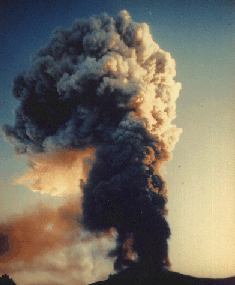
R. Maugeri
Related links:
Figuring Out What is Inside a Volcano
News story originally written on February 14, 2003
To understand when a volcano will erupt, scientists must know what the volcano is like on the inside. Under the dark, rocky surface of an active volcano are underground pools of hot molten rock, called magma. Knowing where the underground pools are, and how much pressure they are under, helps scientists to predict eruptions. Recently, scientists in Italy have discovered where the magma pools are beneath the largest volcano in Europe, Mount Etna, which, in the past, has been very difficult to predict.
Mount Etna is located on the island of Sicily in the Mediterranean Sea. It is the tallest active volcano in Europe. The volcano was quiet since a 1992 eruption, but over the last several months it has been erupting very actively, with hot lava spewing all over. It just calmed down a bit this week.
To figure out what was going on beneath Mount Etna, a team of scientists studied the pattern of earthquakes in the area since 1994. They tracked the locations of hundreds of earthquakes under and near the mountain that cracked rocks deep within the Earth’s crust. The cracks in the rock allowed space for magma to move upward to form pools many kilometers beneath the volcano. The magma in the pools is under pressure and eventually makes its way to the surface during an eruption. The scientists say that the magma moving through cracks could create more volcanic eruptions, and stronger ones, in the future.














